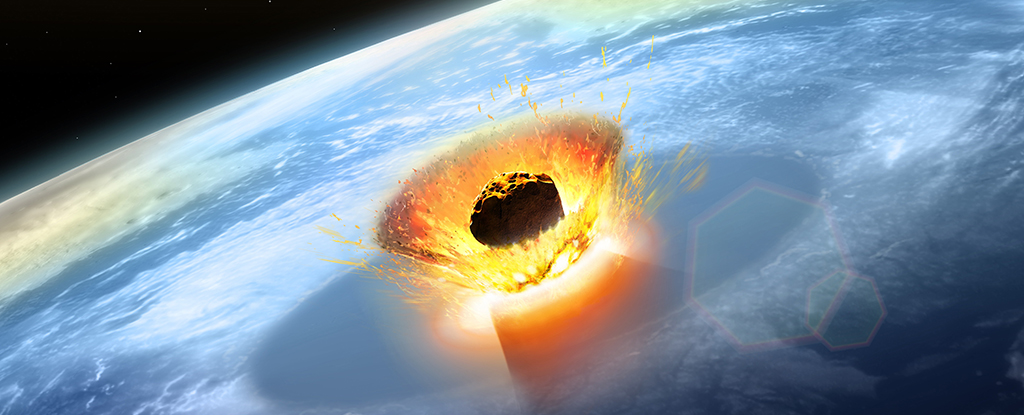When the Chicxulub impactor, a six-mile-wide asteroid, struck Earth 66 million years ago, the dinosaurs had no warning.
If an asteroid that size hit Earth today, a shock wave two million times more powerful than a hydrogen bomb would flatten forests and trigger tsunamis. A seismic pulse equal to a magnitude 10 earthquake would crumble cities.
And long after the impact, a cloud of hot dust, ash, and steam would blot out the sun, plunging the Earth into freezing cold.
But at least we’d probably know it was coming ahead of time. And if NASA has anything to say about it, we may even be able to prevent the apocalypse.
NASA’s Planetary Defense Coordination Office is tasked with finding, tracking, and assessing the risk associated with potentially hazardous asteroids in our solar system.
“We definitely want to find all those before they find us,” said Lindley Johnson, Lead Program Executive for the Planetary Defense Coordination Office.
To do that, NASA works with a global coalition of astronomers called the International Asteroid Warning Network (IAWN).
Here’s what they would do if an apocalyptic asteroid strike was headed toward Earth.
An international warning system
In the event that a dangerous asteroid is headed toward Earth, IAWN has procedures in place to notify the public.
First, the party members who detected the threat would share their observations across the IAWN network to verify their findings and assess the danger.
Once all parties agree that Earth should brace for impact, NASA would send out an alert.
“I don’t have a red phone on my desk or anything,” Johnson said. “But we do have formal procedures by which notification of a serious impact would be provided.”
If the asteroid was headed toward the US, NASA would notify the White House, and the government would release a formal statement to the public. If it was big enough to pose an international threat, IAWN would notify the United Nations Office of Outer Space Affairs.
Hunting for asteroids
An asteroid is considered “potentially hazardous” if it is larger than roughly 460 feet across and intersects Earth’s orbit at a minimum distance of 0.5 astronomical units, which is half the distance between Earth and the sun.
There are about 2,300 known potentially hazardous asteroids out there, and roughly 153 of them are larger than 0.6 miles across. That’s big enough to trigger a catastrophe if one struck Earth.
To find and track them, NASA and the other IAWN partners look for new asteroids in addition to tracking ones that have already been discovered. All their observations get compiled into a database at the Minor Planet Center.
So far, IAWN has found over 34,000 near-Earth asteroids. With enough observational data, NASA can confidently predict their orbits at least a century into the future, Johnson said.
There’s a slim chance that the potentially hazardous Bennu asteroid could hit Earth in 159 years, triggering an explosion equal to 24 nuclear bombs. But the odds of that happening are only about one in 2,700, according to a 2021 study.
If Bennu does head toward Earth, NASA has a few tricks up its sleeve to defend our planet.
Defending Earth
Most of the time, IAWN catches oncoming asteroids long before they become an immediate threat to Earth, according to Johnson. But NASA would need at least five to 10 years of advanced notice to prevent the apocalypse from an approaching asteroid.
In 2021, NASA launched its first planetary defense test mission. It rammed an uncrewed spacecraft into an asteroid to shift its orbit away from Earth.
The mission was a success, and NASA plans to test more deflection techniques in the future. A developing “gravity tractor” technique would send a spacecraft to stay in position next to the asteroid and allow the gravitational interaction to pull the asteroid out of its orbit. NASA is also working on a technique that uses an ion beam to shift an asteroid’s course.
But if the threat was coming in less than five years, NASA wouldn’t have time to deflect the asteroid. Then, it might resort to destruction to minimize and disperse the impact.
If NASA only had a few months of warning, then there’s not much it could do to save Earth.
Thankfully, IAWN’s strategy is to find asteroids decades, if not centuries, before the impact.
“That gives us plenty of time to then try to do something about them while they’re still in space, so that we completely avoid any catastrophe here on Earth,” Johnson said.
This article was originally published by Business Insider.
More from Business Insider:





